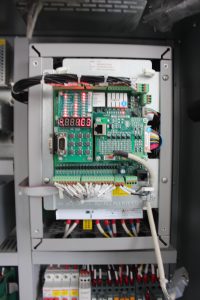
A Lift Step Controller is typically a device used to control the movement of a lift or elevator, often found in industrial, commercial, or residential buildings. It regulates the step-by-step progression of the lift, ensuring smooth and accurate operation as it ascends or descends between floors.
Here’s a breakdown of the key features and functions:
- Step Control: The controller ensures that the lift moves in discrete steps, allowing for precise stopping at each floor level. This can be achieved through sensors or predefined increments in the system.
- Safety Mechanisms: It includes safety protocols that prevent the lift from malfunctioning, such as overload protection, emergency stop buttons, and sensors that detect obstacles in the lift’s path.
- Speed Regulation: The controller often controls the speed of the lift, ensuring that it moves at a consistent rate and stops gently at each floor to avoid any sudden jolts.
- Programming: Many lift controllers can be programmed to operate based on certain patterns, like time schedules, demand, or specific user requests (e.g., a destination call system).
- User Interface: Some Lift Step Controllers have a user interface, typically a panel, that allows the operator to manage and monitor the lift system’s status, settings, and any troubleshooting information.
- Integration with Other Systems: In advanced setups, the controller may be integrated with building automation systems for energy efficiency or to provide real-time data on the lift’s operation.
Is this the type of lift controller you’re referring to, or were you thinking of something more specific?
